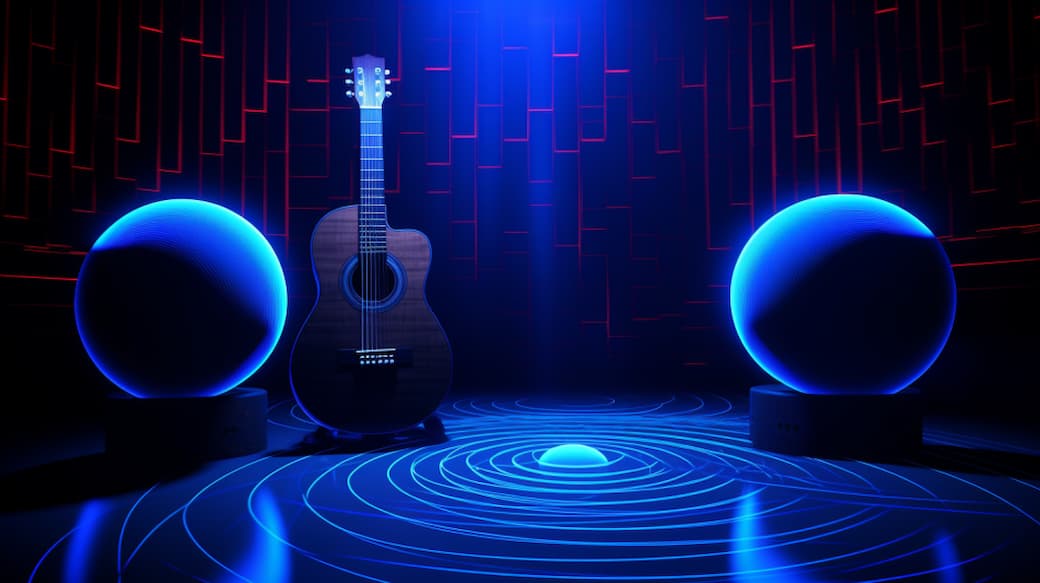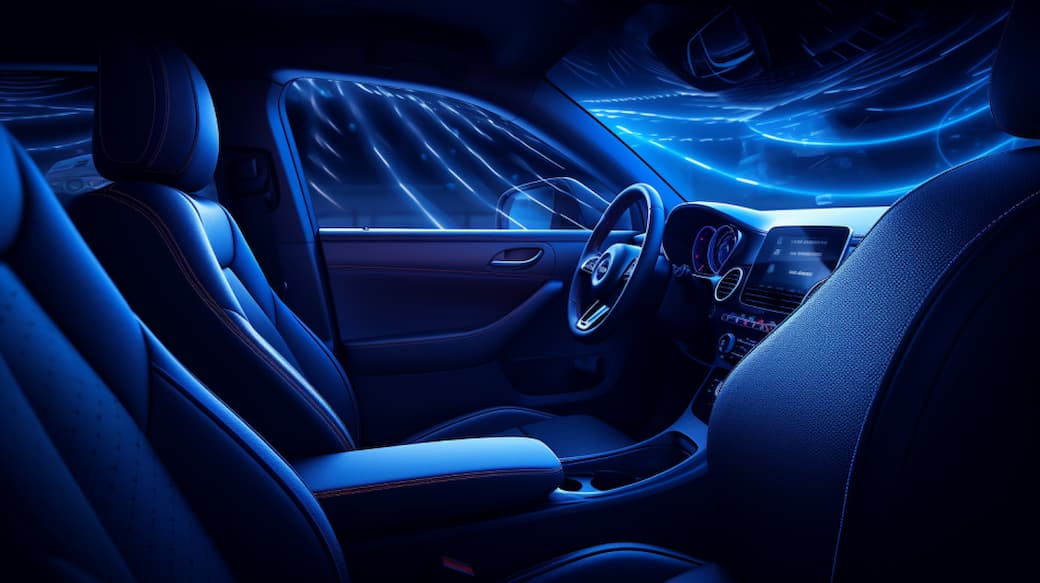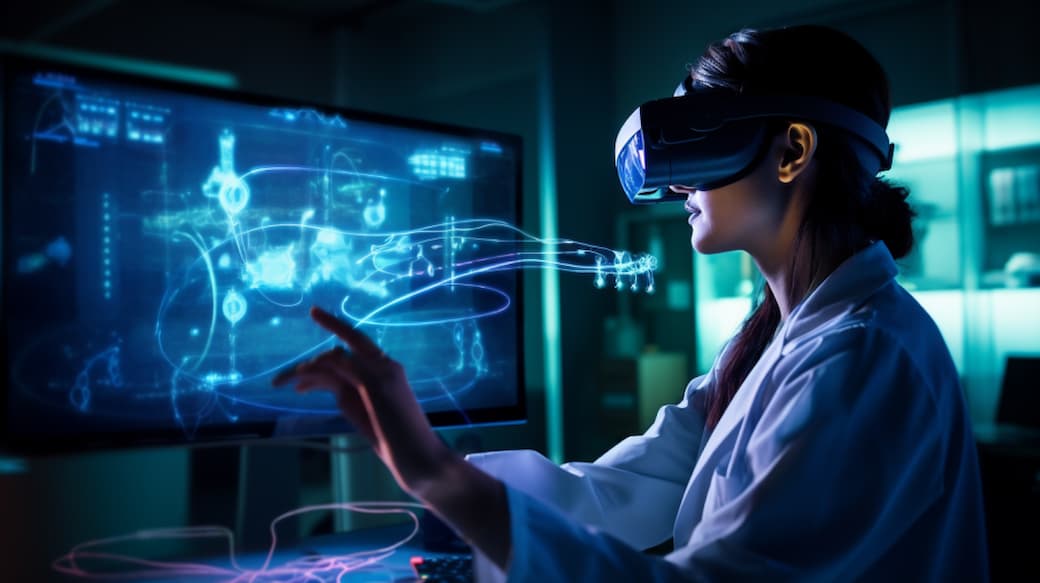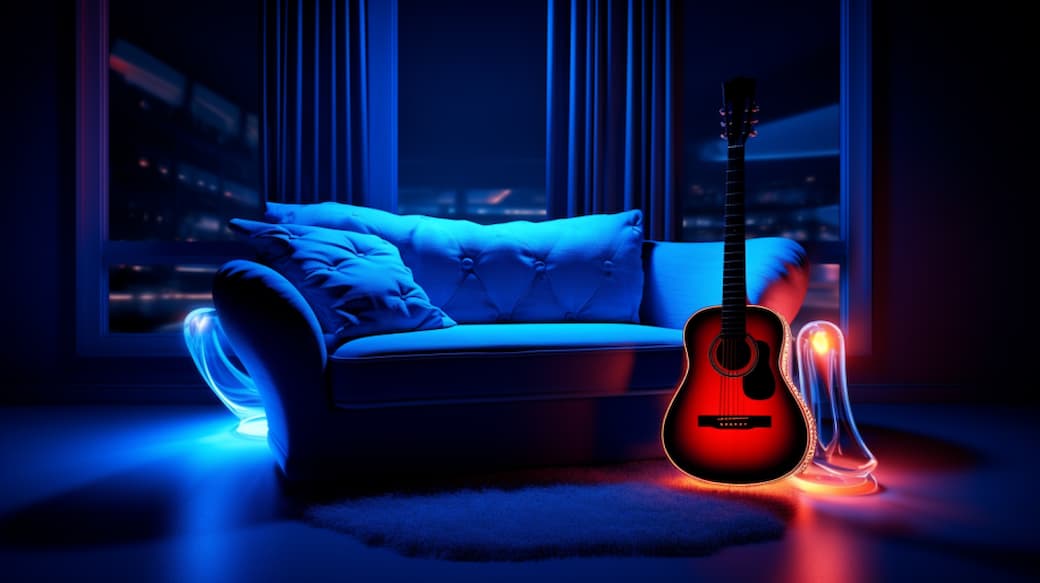
VR acoustic and exciting applications for virtual reality
Content
VR acoustic and exciting applications for virtual reality
The fascinating world of virtual reality (VR) has not only revolutionized the visual aspects, but has also opened a new chapter in acoustic perception and simulation.
Virtual acoustic modeling, a synthesis of acoustic reality and virtual space, forms the backbone for immersive audiovisual experiences in virtual environments.
This innovative technology makes it possible to recreate acoustic scenarios and spatial soundscapes realistically. This introduction highlights the importance of this topic and outlines the structure of this blog article to provide a comprehensive insight into the world of VR acoustics.
Applications of VR-acoustic model superstructures
I have personally had several projects in the automotive sector. Without giving too much away, the companies were interested in in-car auralization.

The idea is that sound propagates in the vehicle into virtual reality through measurements. This is a very useful application in product development and research.
The use of headphones as an aid is revolutionary in a variety of industries and offers projects a new definition to consider the sound image in planning.
Through this, requirements are created that help manufacturers improve the sound quality of their vehicles and acoustically optimize vehicle designs.
Possible applications in mechanical engineering
The integration of a virtual sound field extends across various industries. Even though most people talk about spatial computing glasses, the focus is primarily on the ear. Here are a few examples from the media.
Audio in the field of architecture offers, among other things, the possibility of simulating the acoustic properties of virtual spaces.
This enables architects and designers to analyze and improve the acoustic conditions and construction of buildings even before they are physically built.
This technology supports the creation of an optimally built environment that are focused on acoustic features in various spaces such as concert halls, auditoriums or living rooms.
In education, VR and acoustics offer an immersive learning environment. Teachers can visualize acoustic phenomena and allow students to experience them in a virtual environment.
This can help to improve absorption of the acoustic concept or phenomena, be it in physics, music or other branches of science.
In safety and emergency training, VR can be used in sound simulation for realistic and immersive scenarios where acoustic responses to a warning signal are critical.
This allows rescuers, firefighters and other emergency teams to train their communication and speech under realistic conditions. Learn more about VR training and sound.
The integration of virtual reality and acoustic technologies opens up a wide range of possibilities in the medical field.

Surgeons can train their skills with the help of acoustic feedback in realistic VR simulations. For patients, VR and acoustic elements offer opportunities to reduce anxiety and stress through direct sound, and to support pain management. Learn how Medical Sound can accelerate the healing process with VR.
Technological basics of acoustic virtual reality
The principle of acoustic simulation in VR via headphones is based on the creation of an immersive audio experience that gives the listener the feeling of being in a specific environment.
How can you make a measurement spatial using headphones?
Hearing something through headphones in virtual reality is done using HRTF (Head-Related Transfer Function), a technology that takes into account the individual sound filters of the human ear.
These filters are used to modify sounds so that they can be heard at different positions in the listener’s head.
This process analyzes the direction of view in the scene and calculates how the realities would behave for the ears. The sound fields come from all sides and reproduce the area around the listener in the best possible quality.
Software use and formats
Unity or Unreal Engine as a development platform forms the basis for visual representation and interaction in virtual reality. Wwise, on the other hand, as an audio engine, controls and processes the soundscape in this environment.
Ambisonics, a technique developed for spatial sound recording and playback, enables the precise placement of sound sources in a 360-degree sound environment.
This format is actually only suitable for 360 videos (3 degrees of freedom), but is exciting for impulse responses and reverberation times and therefore also for 6 degrees of freedom.
Ray tracing achieves precise visualization and simulation of the environment in real time, allowing realistic experiences through both visual and acoustic aspects.
However, this software solution is not yet as real-time as one would like. Apple wants to use it for its augmented reality glasses to create the space of the building.
Advantages of scenes for products
The integration of virtual or mixed reality into the world of acoustics offers a variety of benefits for companies and industries that rely on acoustic precision and spatial sound quality.
Cost savings and increased efficiency: Virtual acoustics enable cost-effective design testing and early error detection, resulting in savings on subsequent physical adjustments.
The technology shortens development times (e.g. for acoustic rendering), increases efficiency in optimizing designs and minimizes potential costs for rework.
Quality improvement and resource optimization: By using VR acoustics, engineers and designers can improve sound quality and optimize the efficiency of spaces. A consultant with expertise can help optimize resources and identify the right tools and implementation processes.
Maximizing investment value and subject matter expertise: The support of a consultant maximizes the investment value in VR acoustics by helping companies take full advantage of the technology.
This leads to an improved understanding of the complexity of the technology and its integration into the company’s workflows.
Outlook: Room acoustics for virtual reality

The incorporation of acoustic simulation data into virtual reality opens up promising prospects for future acoustic design and planning. This approach, which has been under discussion for several years, is receiving increasing attention in the academic community.
The use of frameworks in game engines such as Unity and the Unreal Engine makes it possible to model acoustic phenomena such as sound absorption, reflection, diffraction and the Doppler effect in real time.
The material properties on the objects in the development environment influence the calculation of the sound distribution in real time.
Air up for the tools
These technologies open up possibilities for a realistic and immersive acoustic experience. Real-time auralization extends the flexibility of the player object, independent of predefined measurement points.
A human speech, a video or music feels more realistic, as if it occupies physical space. However, this application requires acoustic materials to be stored in the virtual room model in advance.
A future integration of real-time simulation into these virtual environments holds potential, but requires consideration of how the existing basic principles of Wwise and Unity can be maintained.
Possible optimizations and further developments could take into account the use of loudspeaker surround arrays.
Psychoacoustics do not build themselves
When creating VR and AR projects and developing innovative acoustic environments, it is crucial to have an experienced contact person. As an expert in this field, I am at your disposal to support your project with my extensive expertise.
Get in touch